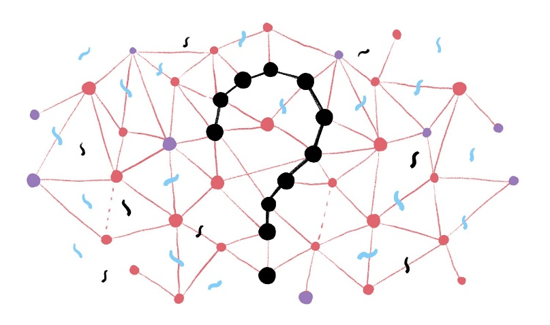The Lawyer, the client & the webcam: 6 rules to a good call…. ignore at your peril!
The era of social distancing is bringing new challenges to effective communication.
I can still recall when first joining the banking sector being put through a training programme regarding ‘telephone etiquette’ as it was referred to then.
This was an entry-level skill set.
To this day many of the basics that I was taught remain invaluable in the business world. This was around tonality, content, listening skills, preparation before the call, taking notes and use of questions in response to questions.
At that point the use of telephone in terms of working with a new client or an existing one was recognised as a specific skill set.
Later in my banking career I was put through another training programme regarding the skill of writing a letter. Again, relatively an entry-level skill but the bulk of those entry-level skills remain exceptionally valued. The content was around the use of language, construction of arguments, framing a call to action and various other well thought through techniques to ensure that my skills in correspondence were appropriate.
As my career developed, I was put through another training programme. This time regarding the skill of presenting. In continuation of the theme I would suggest that these were relatively entry-level methods in terms of how to present in a boardroom. Much of what I was shown I was later able to transpose into making PowerPoint presentations and the need to deliver complex software demonstrations that occurred later in my career.
At that point developing a presentation in terms of; working with a new client or an existing one was recognised as two specific skill sets.
What is interesting to me is that these specific types of training were areas that my employers realised could differentiate our banking offer against the competition. If your bankers were able to handle telephone conversations to a high standard and follow the calls up with well-constructed correspondence it left a positive impression. If your bankers, where appropriate, were then trained to present information either across a desk or within the context of a boardroom to a high standard than that to would leave a positive impression.
If you combined all three skills then you became a ‘Rainmaking’ force.
I suspect that everyone reading this article can immediately ‘buy into’ Rainmaking skills using the spoken word, the written word and the presented word. These are specific business development requirements within the field of professional services which law is.
In this current climate we have a situation where on many occasions there is a brand-new requirement. That requirement is the use of the Webcam.

Currently the virtual meeting is not recognised as a skill set in the same way that voice, text
and face-to-face have been. Yet it is a specific discipline. It is highly likely that over time it will become evident that:
You can win and develop business based on your virtual ability.
Just as:
You can win and develop business based on your telephone approach.
You can win and develop business based on your written word.
You can win and develop business based on your face-to-face performance.

These are 6 basic building blocks to differentiate yourself from other practitioners.
- Focus on the webcam and not on your colleagues
Eye contact is a vital way to reinforce your point. In a webcam-based meeting this means looking into the camera and not into the faces of other the participants. Looking into a small black circle will feel uncomfortable. For years we have been trained to look at the people when talking to them and the challenge is to have a focus on your camera for the meeting. This is especially while others are talking. This will separate you from the behaviour of other people on the call.
- Project a stronger voice
Use a louder and firmer than usual voice on a webcam call. As well as projecting your audibility a strong voice conveys authority, confidence and credibility. It is just as true in the virtual world. Even though you may be using a headset and be tempted to speak at your normal volume maintain a slightly higher audibility level almost as if you are in a large conference room.
If you are using a microphone that is desk-based resist the temptation to lean into it and speak at a conversational level. Actually, lean back and project your voice as if speaking over a lectern. This will also separate you from other people on the call.
- Frame yourself
Look at how you appear through the lens of the webcam. You need to organise the call in a manner where your head, the top of your shoulders and just above waist, should dominate your projection. Look at newscasters, that are sitting behind a desk, to get some idea of what this should look like.
Be mindful of your background as cluttered rooms communicate something and anything that is distracting will pull the attention away from you. Look for a simple plain background as neutral as possible.
- Be totally engaged
In a boardroom meeting, participants are usually exceptionally aware of what their body language and behaviour may signify. In a webcam call, where you may be muted and perhaps dressed less formally, you may forget that you are on show.
Do not multitask. At any moment you may be asked a question. Even if you are not the speaker ensure that you are fully engaged. Close all screens on your PC and a good habit is to turn your phone facedown throughout the call.
- Remove all distractions
Train yourself to stay on mute when you are not the person speaking. Only unmute yourself when you are the one speaking. If you mute your microphone it removes any sound that accidentally may be audible from your end of the call.
It is also worth to consider to switch off your webcam when you may be doing something visually distracting such as moving whilst on camera.
- Using the chat box
The chat window is a key part of the communication in a webcam-based call. It is an opportunity in a virtual meeting to add your ideas, demonstrate that you are fully engaged and also promote your presence in the meeting.
It may be the case that you have been engaged in virtual meetings for many years. It may be that you have only truly engaged in this medium since the pandemic.
It is vital to understand that a Webcam call is not a conference call through a PC screen. It is a different interactive experience requiring you to rethink your communication tactics.








